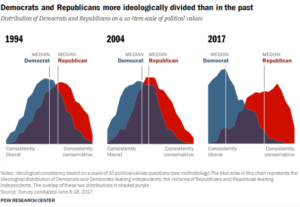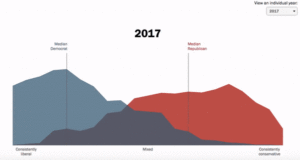Business & Money
My team recently lost a deal at work to a competitor. The frustrating part is that the prospect falls square in the center of our ideal customer profile. We have a ton of case studies that speak to why our technology is specifically built for this type of customer and how other similar companies have been successful. But it didn’t matter. We were told that the decision solely came down to price.
We do not compete on price. And that’s for good reason. To lower our price would be to devalue the platform and service we provide. And that’s particularly true when the point of comparison is apples to oranges.
Further, we came to the table very late in the evaluation, so it’s unclear whether we were truly being considered, or if we were being used for leverage in a negotiation.
So it’s easy to say that there’s not much we could have done in this situation. But the easy way out doesn’t provide much learning. And it’s a bit intellectually dishonest.
When I shop for undershirts, I generally buy Hanes because they are the cheapest. There are usually other options from Polo Ralph Lauren and Calvin Klein, but we’re talking undershirts. It doesn’t matter the brand because they serve a very utilitarian purpose. Just catch sweat and keep me comfortable.
When I buy jeans, I tend to pay up. Cheap ones rip and don’t fit well. So the value of more expensive brands has been proven to me on multiple occasions, and thus warrant more investment.
So to say that we lost on price is to say that we did not do a good enough job at communicating the value and differentiation of our software. I’ll be spending some time this week with the team to pull this one apart, dissect our process step-by-step, and try to see what there is to be learned. Perhaps there’s some small stone to be turned that might help us in a future situation.
Human Progress
You’ve likely seen the following series of charts before:

It represents a long-running research study conducted by the Pew Research Center that shows the distance between the median Democratic voter and the median Republican voter.
Here’s a time-lapse version:

In 94′ and 04′ you see something akin to a bell curve or normal distribution with a ton of overlap between the Republican and Democratic electorate.
In 17′ you see two distinct peaks, what’s known as a bimodal distribution.
The interesting thing to point out here is the total area of the different colors. Red is purely Republican, Blue is Democrat, and purple area represents the overlap.
When you have the normal distribution, the overlapping purple area is larger than the aggregate of the red area + blue area. That allows for relatively centrist politics.
But when the purple area is smaller than the aggregate of red + blue, a centrist politician cannot win a nomination or an election.
In 2016 we whipsawed to the far right, and perhaps we swing to the other extreme in 2020. But neither result seems ideal.
And the scary part is, because the center cannot hold, this divide is likely to continue getting wider and wider as we swing back and forth from one extreme to the other.
I’m not sure I want to see how this movie ends.
Philosophy
If you’ve ever spent a good amount of time in New York City, you’ve likely seen those long lines of young school children walking on the sidewalk. Kids need to burn energy, so I imagine these kids are heading to parks and/or playgrounds for recess.
What I love about this site is that all of the kids are usually paired up and holding hands. So you get little white kids, black kids, Spanish kids, Indian kids, Asian kids, and kids of all colors and creeds holding hands making their way through the craziness that is a New York City sidewalk (I’m not sure that I want this experience for my kids, but that’s a topic for another day).
Where else in the world do you get that? I’m sure that are a few other places, but I’m convinced that this experience must be incredibly formative for these kids.
What if everyone in your office walked to lunch together holding hands? Might you feel differently about the weird IT guy or the quiet office admin?
I think that something about human contact brings you closer to other people. It’s one reason I’m a huge fan of high-fives and fist bumps in the office to celebrate small wins.
My Latest Discovery
I usually try to surface something interesting or useful in this section. However, this week I watched such a terrible movie, that I must warn you so that you don’t meet the same fate. Whatever you do, DO NOT watch Netflix’s “How It Ends.”